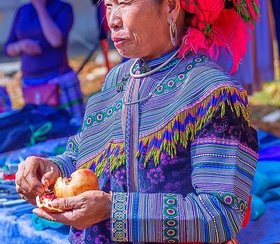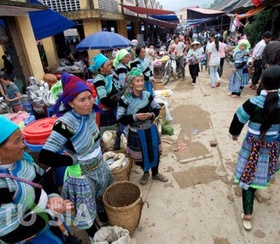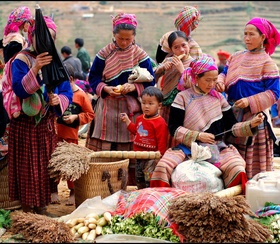Discover Sapa
Discover Sapa on Foot: Essential Trails and Villages to Visit
Sapa, nestled in the northern highlands of Vietnam, is one of the best places in the whole country for trekking. You get to slow down, meet the local while soaking in breathtaking landscapes that remain hidden to fast travelers. If you plan a trip to Sapa, make sure to include at least one of the following in your itinerary:
Cat Cat Village – The Gateway Trek
Just a short walk from Sapa town, Cat Cat is often the first stop for beginner trekkers. The village offers a glimpse into Hmong culture, with traditional houses, handicraft shops, and a scenic waterfall. Though touristy, it’s a good warm-up trek to ease into Sapa’s terrain.
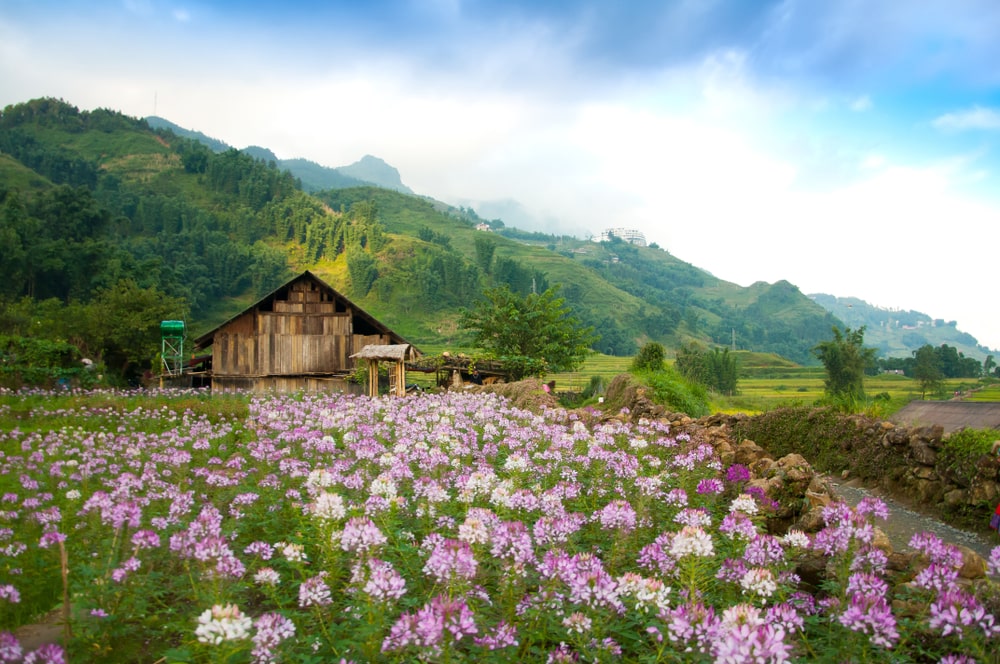
Charming beauty of Cat Cat Village (Photo: Piu_Piu via Shutterstock)
How to get there
Cat Cat Village is only about 2 km from downtown Sapa, making it easy to reach on foot in around 20–30 minutes downhill. You can also rent a motorbike or take a short taxi ride if you prefer not to walk. Keep in mind the return trip is uphill, so many visitors choose a taxi or motorbike back to town.
Lao Chai & Ta Van – Rice Terraces and Homestays
A trek through Lao Chai and Ta Van winds through cascading rice terraces and leads you to these amazing Hmong and Dzay Villags. It’s one of the most popular routes, ideal for travelers seeking authentic homestay experiences. The trail is moderate and gives stunning views of Muong Hoa Valley.
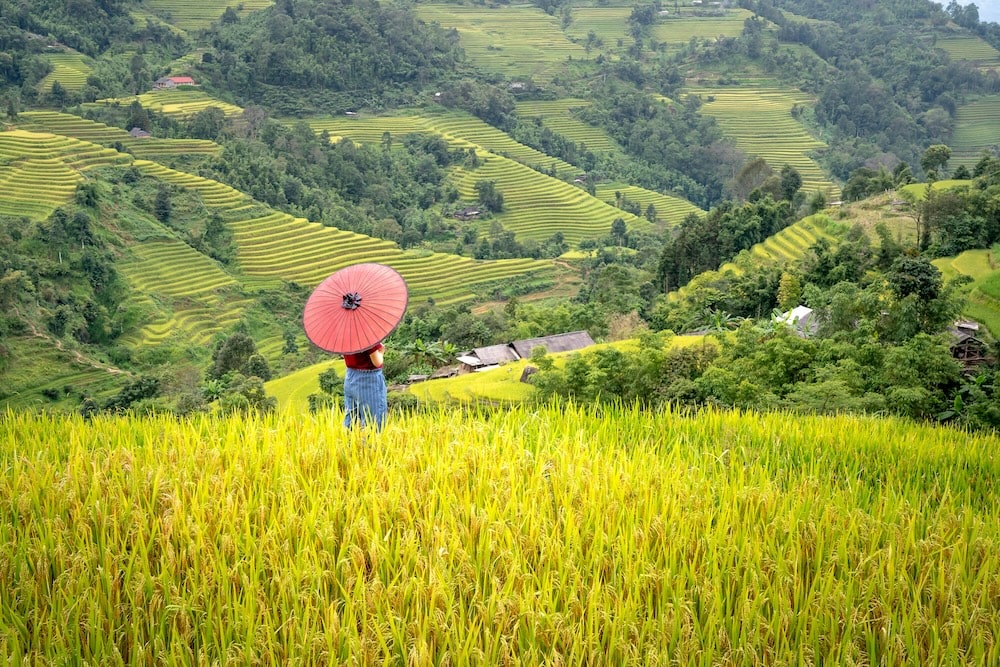
Lao Chai Village (Photo: Quang Nguyen Vinh via Pexels)
How to get there
Lao Chai and Ta Van villages are about 7–10 km from downtown Sapa, set deep in the Muong Hoa Valley. You can reach them by motorbike, taxi, or on a guided trek that takes you through rice terraces and minority villages. The road is winding but scenic, and many travelers choose to walk one way and arrange transport back to town.
Ta Phin Village – Red Dao Culture
A trek to Ta Phin brings you closer to the traditions of the Red Dzao people, known for herbal baths and vibrant embroidery. Along with Hmong and Dzay, Red Dao makes up the majority of ethnic minirities in Sapa. The path passes through lush valleys, caves, and peaceful farmland. Spending time with Red Dzao families offers both cultural depth and relaxation.
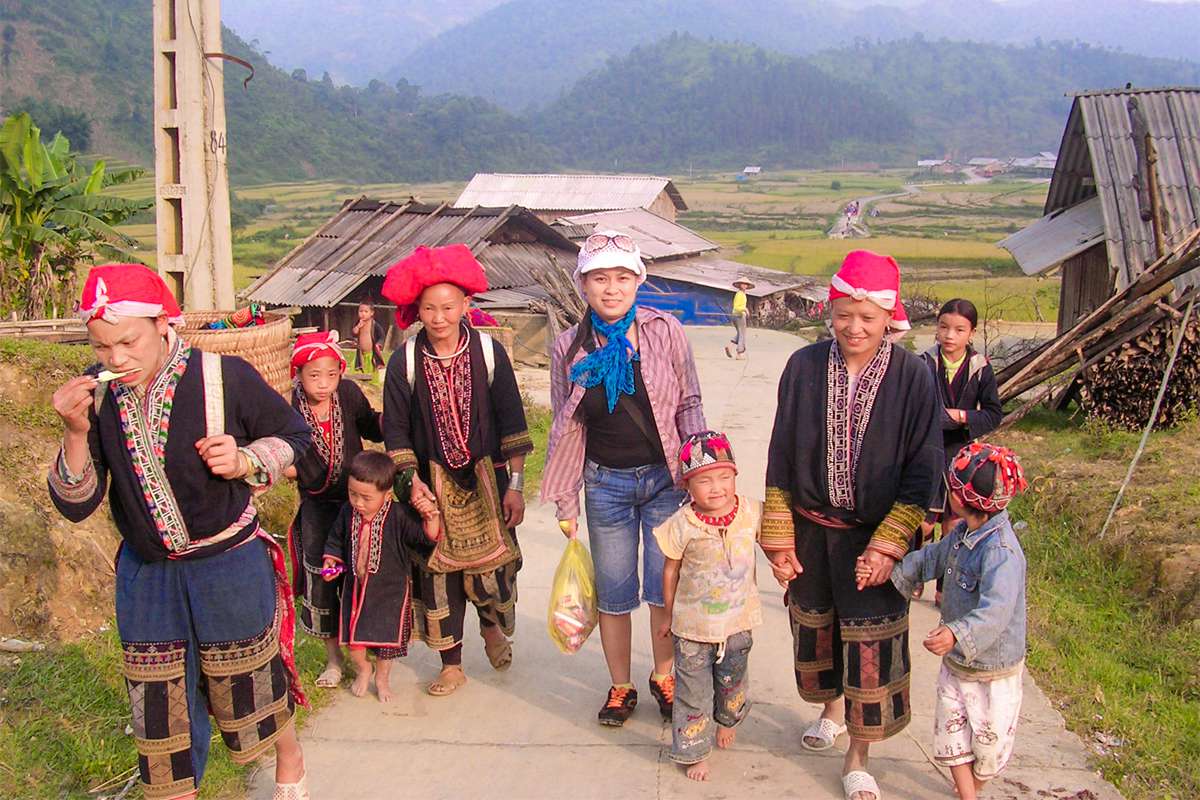
Ta Phin Village (Photo: Local Vietnam)
How to get there
Tả Phìn Village is about 12 km from downtown Sapa, home to the Red Dao ethnic minority. You can get there by motorbike, taxi, or an organized trekking tour through valleys and terraced fields. A trip to visit Ta Phin village will take at last half a day.
Fansipan Base Trails – For Adventurers
If you’re not up for summiting Fansipan (the “Roof of Indochina”), you can still trek along its lower slopes. These trails are more challenging but reward you with wild forest landscapes, mountain streams, and fewer crowds. Guided treks are recommended for safety.

Fansipan Trek in Sapa (Photo: @w.a.you_ via Instagram)
How to get there
The Fansipan base trails start just a short drive (about 3 km) from downtown Sapa, near the cable car station. You can reach the trailhead by taxi or motorbike in under 15 minutes. From there, trekkers can begin the ascent of Fansipan—the highest peak in Indochina
Giang Ta Chai – Hidden Waterfalls
A slightly off-the-beaten-path trek, Giang Ta Chai is home to a Red Dzao community and a beautiful waterfall. The route offers a mix of bamboo forests, suspension bridges, and terraced fields, perfect for those wanting both adventure and quiet scenery.

Crossing bamboo forests in Giang Ta Chai trails (Photo: @sapabysulinh via Instagram)
How to get there
Giàng Tả Chải Village lies about 12 km southeast of Sapa, close to Lao Chai and Ta Van in the Muong Hoa Valley. It’s reachable by motorbike, taxi, or as part of a trekking route. You can also combine a trip to Giang Ta Chai with a trip Lao Chai/ Ta Van for a full day trek.
Tips for Trekking in Sapa
- Hire a local guide: Supports community tourism and ensures you don’t miss hidden spots. We also organize local guide and/or transfer to the villages where you can roam freely.
- Pack light but smart: Good shoes, raincoat, refillable water bottle, and some snacks.
- Respect local culture: Ask before taking photos, and consider buying handmade crafts directly from villagers.
- Check the weather: Trails can be muddy and slippery, especially during rainy months. Be careful of landslide which causes road closures.
Exploring Sapa on foot is more than just trekking—it’s about connecting with the nature and the peole. Whether you choose an easy stroll to Cat Cat or a multi-day hike through remote villages, each step reveals another layer of Sapa’s beauty. Lace up your boots, and let the mountains guide you.
Customer Support

- Fast, hassle-free booking: book your train tickets and other service with peace of mind
- Local Support: Our staff is available to answer questions, handle changes, or provide travel updates.
- Personalized Assistance: Get tailored advice on train tickets, hotel options, and tour add-ons







